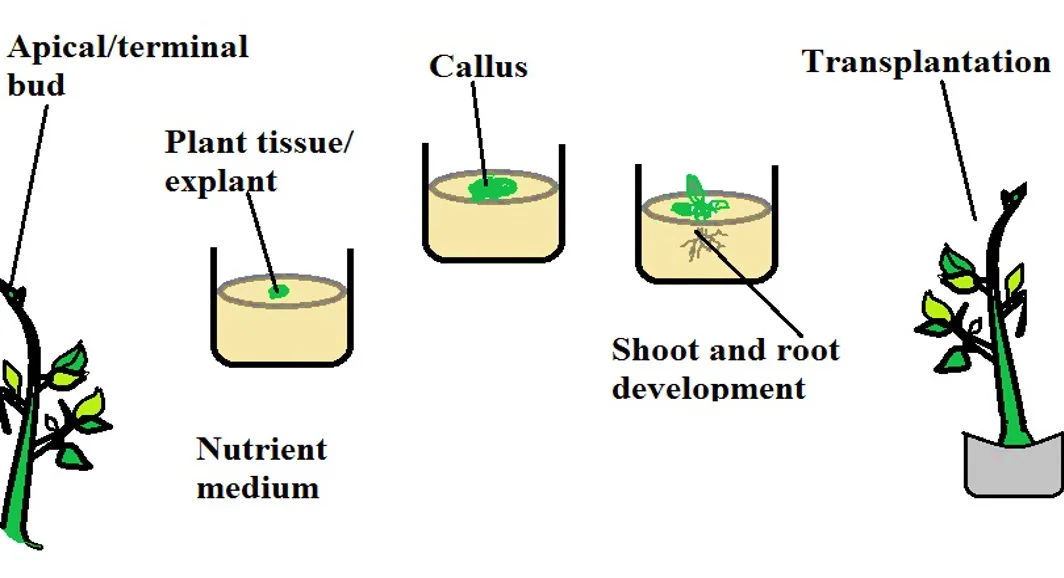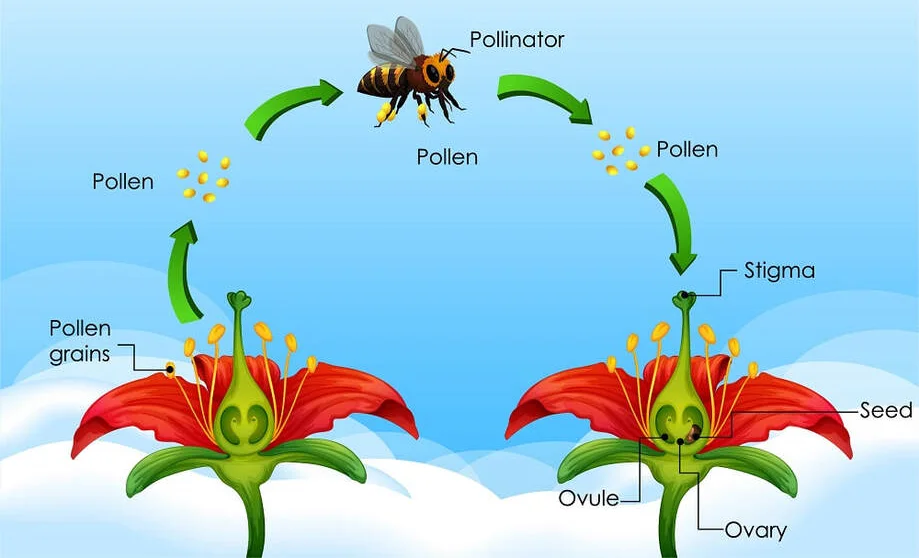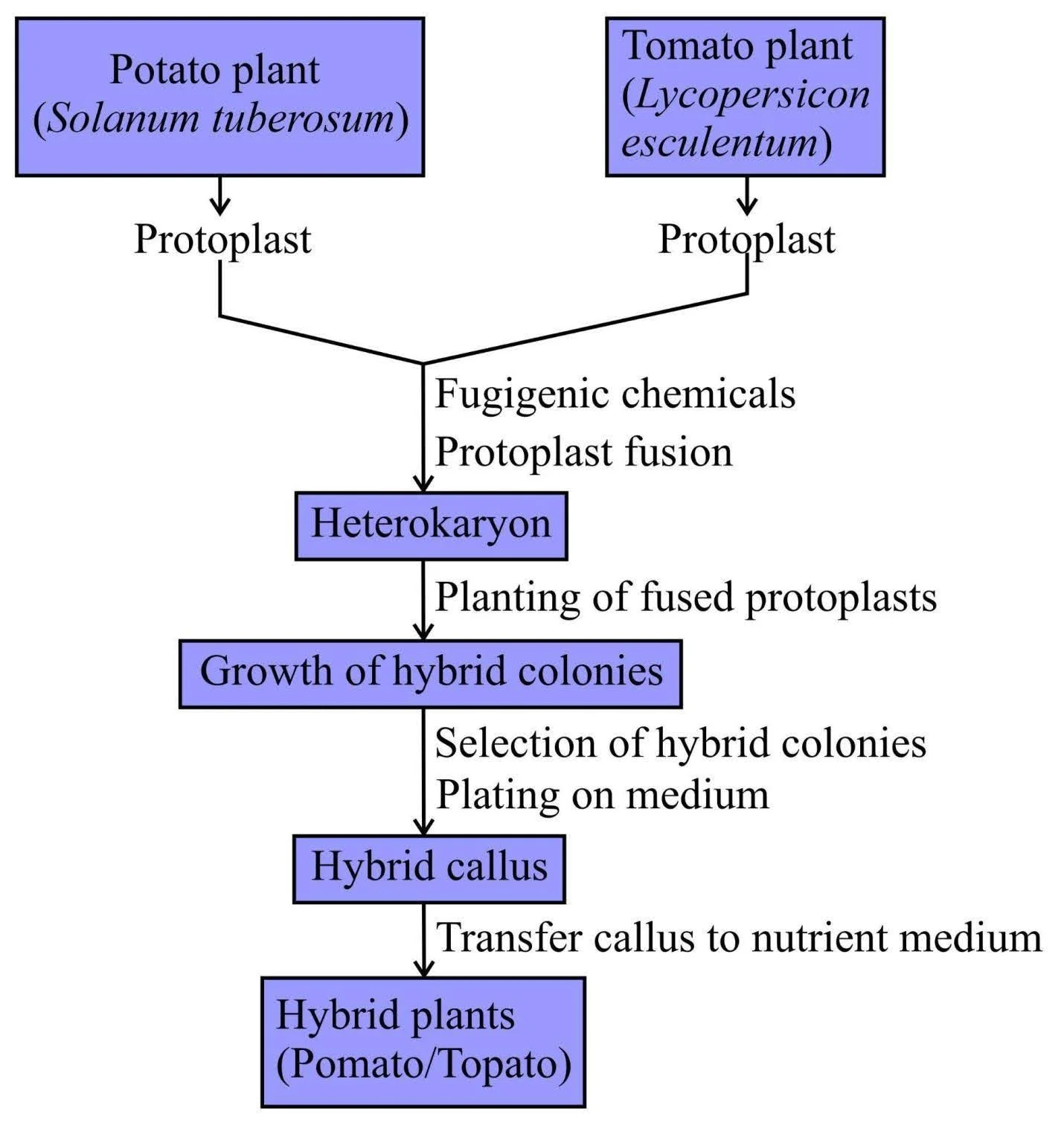- Written By
Manisha Minni
- Last Modified 14-01-2025
Economic Importance of Artificial Propagation: Definition, Advantages
Economic Importance of Artificial Propagation: Have you ever thought about how you can grow different colours of fruits and vegetables with desirable characters? It is done with the method of artificial vegetative propagation by human involvement. Cutting, grafting, layering, and micropropagation are examples of artificial vegetative reproduction methods.
Various methods of artificial propagation improve plant quality, yield, disease resistance, and plant products. It is a simple, less expensive, and quicker technique of propagation. It preserves the parent plant’s genetic material and features, resulting in the formation of a clone of the parent plant. Let us study more to know about the economic importance of artificial propagation in detail.
What is Artificial Vegetative Propagation?
Plant reproduction involving human intervention is known as artificial vegetative propagation. Layering, grafting, and cutting is examples of artificial vegetative propagation processes. This method is more advantageous since it improves plant quality, yield, disease resistance, and plant products. As a result, this method is economically beneficial.
Learn About Gymnosperms Here
Artificial Vegetative Propagation
Artificial propagation enables agriculturists and horticulturists to improve and expand the quantity and quality of their products in two main ways:
1. By mass-producing genetically identical plants of the desired variety. It is vital in horticulture when the grower wants to continue the desired quality of flowers, seeds, or entire plants. This is accomplished in two ways: A) vegetative propagation and B) micropropagation.
2. By developing new plant varieties with desirable characteristics. Hybridisation can accomplish this, which involves crossing two varieties to produce a plant with a new desirable variation that can then be propagated further.
Advantages of Artificial Vegetative Propagation
The following are some of the significant advantages of artificial vegetative propagation of plants:
- Artificial vegetative propagation will produce new plants that are identical to the parent plants. Any favourable characteristics of the parent plant will be carried over to the offspring.
- It enables the desirable traits of two different types to be combined.
- It provides an excellent way for propagating preferred plant types at a lower cost and in a shorter period of time.
- It allows several plants to be grown from a single parent plant.
- Seedless plants can also be obtained through artificial propagation.
Micropropagation
Micropropagation is a tissue culture technique for the rapidly vegetative multiplication of ornamental plants and fruit trees in test tubes using an artificial medium. This tissue culture approach yields a number of plants. Each of these plants will have the same genetic makeup as the original plant from which it was developed. If vegetative propagation is not viable in a crop, buds, shoot apex, or any other portion of the plant can be utilised as an explant for micropropagation.
To prevent microbial growth, the explants are sterilised and then grown in an appropriate culture medium that contains all the nutrients, minerals, vitamins, and hormones essential for the intended growth and development. The cells form a callus, which is an unorganised mass of cells. To encourage development and differentiation, small pieces of callus are transferred to another medium containing various combinations of plant hormones.
The callus develops into roots, followed by shoots and plantlets. After 4-6 weeks, these plantlets can be transplanted to the soil or pots. A high number of plants can be generated in a short amount of time. This can be used to create disease-free, identical decorative plants such as Orchids, Dahlias, Chrysanthemum, etc.
Fig: Micropropagation or Plant Tissue Culture
Advantages of Micropropagation
Micropropagation has several advantages over traditional plant propagation methods, including:
- Rapid multiplication of clones of each other in a short period of time and on a small scale.
- Plants are grown in controlled conditions, regardless of the season.
- Isolating disease-cells and using them to produce disease-plants for horticulture and agriculture is possible.
- This strategy is used to multiply sterile plants or plants that cannot keep their characteristics through sexual reproduction.
- It can have a very high fecundity rate, producing thousands of propagules, whereas traditional approaches may only generate a fraction of that.
- After protoplast fusion, it is the only viable way of reproducing genetically modified cells or cells.
- This strategy multiplies rare and endangered plant species, saving them.
- Using this strategy, germplasm stocks can be kept for several years.
- In the culture vials, millions of plantlets can be kept alive.
Limitations of Micropropagation
The limitations of Micropropagation are as follows:
- A procedure that is considerably more expensive than traditional farming methods.
- For optimum growth and multiplication, sterile conditions are required.
- Not suitable for all plant species.
- It has the potential to cause undesired genetic alteration.
- It’s a time-consuming process that requires following a step-by-step technique.
Hybridisation
Hybridisation occurs when the characters of two parents are mixed in the offspring. Hybridisation is an old strategy for increasing genetic variation in a population.
Hybridisation is carried out on both animals and plants to obtain the greatest possible commercial benefit.
Types of Hybridisations
This can be accomplished in three types:
1. Intervarietal or Intraspecific Hybridisation: Hybridisation between two varieties of the same species is known as intervarietal or intraspecific hybridisation. It is the most popular and widely utilised.
2. Interspecific Hybridisation: Hybridisation between two species of the same genus is known as interspecific hybridisation. This type of hybrid is generally difficult to produce. This is used to create disease-resistant plants.
3. Intergeneric Hybridisation: Hybridisation between organisms from two different genera is known as intergeneric hybridisation. The most difficult hybrids to produce are intergeneric hybrids.
Cross-pollination and somatic cell hybridisation are two methods for plant hybridisation.
1. Cross-pollination: Cross-pollination is the transfer of pollen from the anthers of one plant’s flower to the stigma of another plant’s flower.
It can also be caused by the wind, water, or insects in plants.
Farmers have been able to produce superior plant types because of this.
Fig: Cross-Pollination
The following procedures are commonly used:
a. Plant selection is referred to as selecting both parental plants for the process. The plant must be healthy and capable of growing in the specified conditions, which are the two critical requirements of the procedure.
b. Homozygosity– Inducing homozygosity in the parental plants is critical for establishing line purity, which means removing undesirable features. Self-pollination or selfing of the parental plants is used to obtain the desired result across generations.
c. Emasculation– This is the process of removing the male reproductive organs from a flower. It’s generally done with bisexual flowers and avoided with unisexual ones. The removal of anthers or stamens (male reproductive organs) must be done carefully not to harm the ovum. It is completed before pollen shading. The scissors procedure, hot water therapy, alcohol treatment, and suction are some of the methods utilised for emasculation.
d. Bagging– This is a technique for covering the ovum of a flower. This is done to prevent other pollen from pollinating the flower. Paper, butter paper, and vegetable parchment paper are used to make the bags.
e. Tagging– Attaching a tag to an emasculated plant that provides information such as the number of field records, the date of emasculation, the date of crossing, and the name of the plant to which it is attached.
f. Crossing– It is the artificial cross-pollination process. Pollen from selected parents is put on the stigma of the flower in this procedure, allowing fertilisation.
g. Harvestation– The seeds from this progeny are gathered and preserved with the original tag.
h. F1 generation– The seeds produce a filial one generation, which is then exposed to a hybrid selection process.
2. Somatic Cells Hybridisation: Normal vegetative cells from two different plant varieties are combined to create a hybrid with desired characteristics.
a. The cell walls of cells are then gently removed using enzymes.
b. Protoplasts are the plant cells that are generated.
c. With the help of specific chemicals or a very brief high voltage electric current, the protoplasts of the selected d. parents’ fuse. Heterokaryons are the resulting merged nuclei.
d. When fused protoplasts are cultured under ideal conditions, their cell walls regenerate, and they begin to divide, eventually developing into miniature plants or plantlets.
e. Somatic hybrids are produced by crossing different varieties of the same species.
f. Pomato, for example, is a somatic hybrid of tomato and potato.
g. Alternatively, between two species. Triticale, for example, is a cross between Wheat Triticum and Rye secale.
Fig: Somatic Cell Hybridisation
Benefits of Somatic Hybridisation
The benefits of Somatic Hybridisation are as follows:
- It aids in the creation of hybrids of species that cannot be formed by sexual means.
- For the purpose of cloning.
- It helps to introduce helpful genes, or foreign genes that result in a higher-quality plant.
- This process helps in genetic manipulation, such as the transfer of useful genes from one plant to another.
Advantages of Hybridisation
The advantages of Hybridisation are as follows:
- In one or more qualities, the hybrid excels from either parent plant.
- It’s the most frequent way to make genetic variants for experiments and research.
- Hybrid plants are disease and insect-resistant in general.
- Adaptability to grow in a large number of habitats and may grow in a variety of soil types.
- Early maturity and higher yields are characteristics of hybrid plants.
- The nutritional and economic value of hybrid plants is higher.
- Hybrid plants have a better chance of surviving in a variety of climates. They can be flood and drought-resistant.
Important Questions on Economic importance of Artificial Propagation
Summary of Economic Importance of Artificial Propagation
Plant reproduction involving human intervention is known as artificial vegetative propagation. Artificial propagation enables agriculturists and horticulturists to improve and expand the quantity and quality of their products. By mass-producing genetically identical plants of the desired variety, vegetative propagation and micropropagation are produced by developing new plant varieties with desirable characteristics through hybridisation.
Micropropagation is a tissue culture technique for the rapidly vegetative multiplication of ornamental plants and fruit trees in test tubes using an artificial medium. Hybridisation occurs when the characters of two parents are mixed in the offspring for increasing genetic variation in a population.
FAQs on Economic importance of Artificial Propagation
Q.1. What is artificial vegetative propagation?
Ans: Plant reproduction involving human intervention is known as artificial vegetative propagation.
Q.2. What is emasculation?
Ans: It is the process of removing the male reproductive organs from a flower.
Q.3. What is a callus?
Ans: The callus is an unorganised mass of cells.
Q.4. What are the advantages of artificial propagation?
Ans: The advantages of artificial propagation are:
1. It’s faster and more certain.
2. Produces the same level of quality as the parent.
3. Plants that lack viable seeds can, however, be reproduced.
4. The flowers that are produced are of outstanding quality.
Q.5. What are the disadvantages of artificial propagation?
Ans: The disadvantages of artificial propagation are:
1. It doesn’t generate new varieties.
2. It eliminates species genetic diversity, which might result in lower food yields.
3. The plants are all genetically identical; they are all vulnerable to plant viruses, bacteria, and fungi that can wipe out entire crops.
4. It has an extremely slight chance of dispersal.
Learn About Phytochrome Here
We hope this detailed article on the Economic Importance of Artifical Propagation helps you. If you have any queries, feel to ask in the comment section below and we will get back to you at the earliest.










































